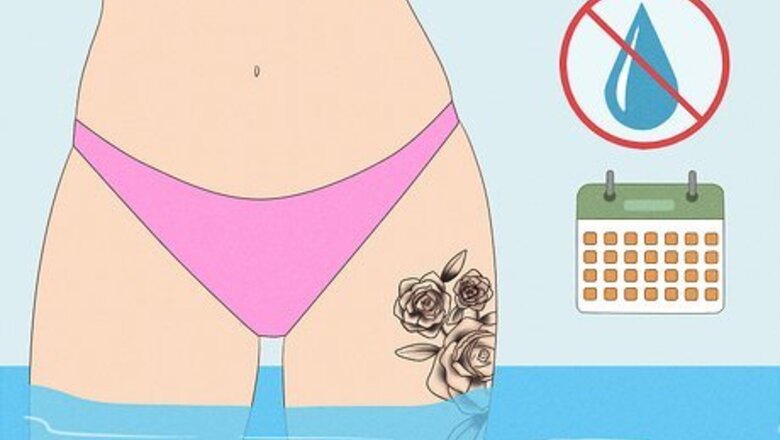
views
When can I swim after getting a new tattoo?
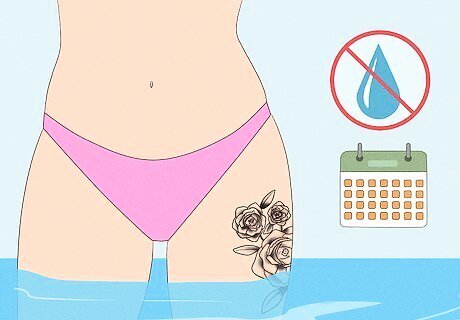
Wait about 4 weeks until your tattoo is fully healed. It’s absolutely essential to avoid fully submerging your tattoo in water until the skin around it has fully recovered. A new tattoo is basically an open wound so getting it wet too soon holds high risks of irritation, skin infection, and damage to the ink. Avoid baths, hot tubs, pools, oceans, rivers, lakes, and any other body of water until your tattoo has healed properly. The average amount of time a tattoo takes to heal is a month, but can be as short as 2 weeks or as long as 3 months. It’s best to listen to your tattoo provider on the approximate time it’s safe to swim again. Showering with a new tattoo is okay. Just don’t stay in the shower for too long and avoid using loofahs or sponges until your skin has healed. Don’t stress if your tattoo gets a little wet before it has fully healed. Just dab it quickly with a clean towel to avoid attracting bacteria.
Applying a Waterproof Dressing

Wrap your tattoo with a waterproof bandage right before swimming. There is no way to fully waterproof a tattoo before it has fully healed. However, if swimming is unavoidable, the next best option is to cover your tattoo with a waterproof bandage like Sanaderm, Tegaderm, or medical retention tape. Make sure to apply the bandage immediately before swimming to avoid as much sweat buildup as possible beforehand. Avoid swimming in oceans, lakes, and rivers altogether. While the chlorine in a swimming pool is still bad for a tattoo, the bacteria found in large freshwater bodies (especially coastal freshwater bodies) are far more dangerous and unpredictable.
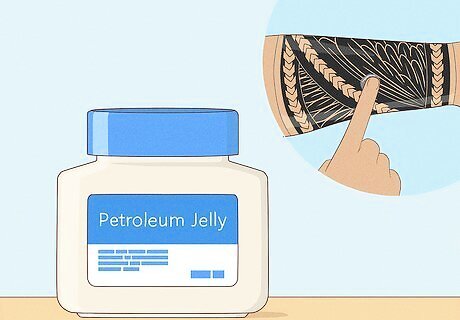
Cover your seal with petroleum jelly or a petroleum jelly alternative. Because petroleum jelly is moisture-trapping, applying a thin layer of it on top of your waterproof bandage adds an extra layer of protection between the water and your tattoo. If petroleum jelly is too harsh on your skin, coconut oil, cocoa butter, and other water-based lotions can offer the same protection. Your tattoo provider may also have recommendations.

Swim for no more than 1 hour. Make sure your tattoo is submerged in water for as little time as possible. Swimming or keeping your waterproof bandage on for too long increases the risk of infection and tattoo damage.
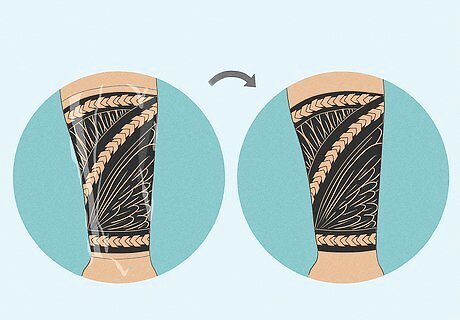
Remove your waterproof bandage as soon as you finish. To minimize bacteria spreading, remove your waterproof sealant as soon as you get out of the water. The longer you wait, the more you risk harm to your body and piece.

Rinse your tattoo with fresh water and mild soap. Once you’ve taken your waterproof bandage off, clean your tattoo gently but thoroughly. Rinse it with warm water. Then, massage in a fragrance-free, antibacterial soap.
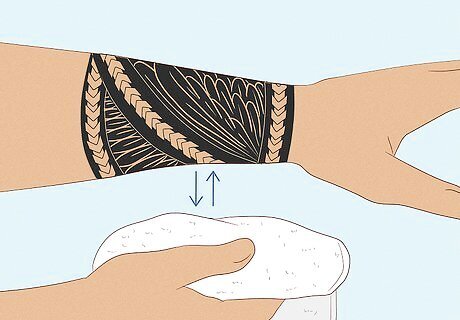
Pat the affected skin with a towel. Once you’ve finished cleaning your tattoo, gently dry your skin by dabbing it down with a clean towel. Make sure to pat your skin lightly with a towel. Do not rub!
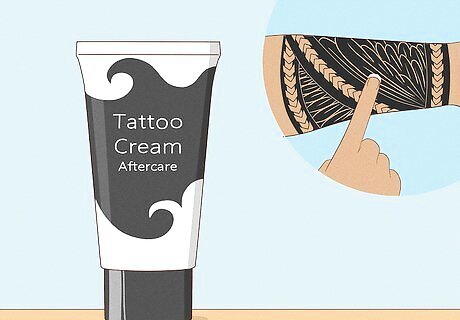
Apply aftercare cream. Once your skin is clean and dry, apply your tattoo aftercare cream or one of your tattoo provider’s recommended lotions or moisturizers. If you’re having a hard time choosing a moisturizer or lotion, look for non-comedogenic and fragrance-free products. The milder, the better!
Caring for a New Tattoo
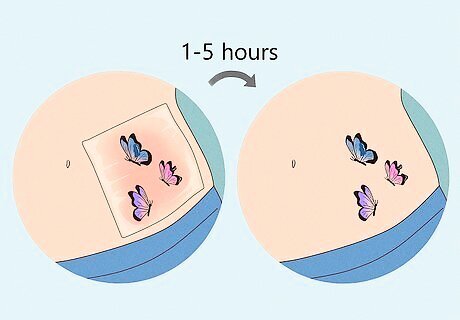
Remove the tattoo bandage as directed by your tattoo artist. Your tattoo isn’t quite done once you’ve left the tattoo shop. Properly caring for your tattoo while your broken skin recovers is an important step in making sure your cool new ink develops as intended. Once you get home, remove the tattoo covering to prevent it from sticking to your skin. Remove your tattoo bandage anywhere from 1 to 5 hours after your piece has been completed. Since every piece is different, talk to your tattoo provider for their advice on when they feel it’s the best time to peel the bandage off. The tattoo artist will provide you with instructions on how to take care of your tattoo. Make sure to follow them exactly.

Clean off the excess ink and blood. After you’ve taken off your tattoo bandage, immediately wash away the excess fluids with a clean, dry hand. Then, pat your skin dry with a towel and cover it with a protective layer of antibiotic ointment like bacitracin or Neosporin. After 5 days, replace the antibiotic ointment with a fragrance-free body lotion.
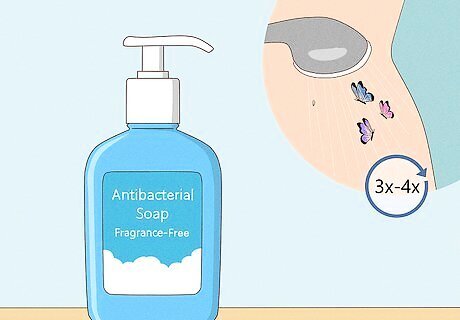
Wash your tattoo with a mild, antibacterial soap 3-4 times per day. Rinse your tattoo with warm water and use your hand to massage a fragrance-free, antibacterial soap into your skin 3 to 4 times a day for the first 7-10 days. When you’re done, gently pat your skin with a towel and let the rest air dry. Antibacterial soaps can be purchased online or at any major grocery store/pharmacy. Some tattoo shops even sell their recommended soap brands in their stores.
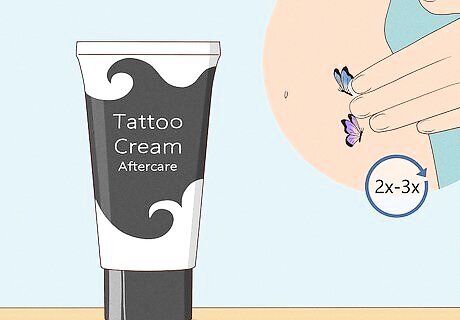
Moisturize your tattoo 2-3 times a day. It’s common after a new tattoo for your skin to scab and start flaking. To keep the ink in the best condition, moisturize the affected area regularly with a tattoo aftercare cream. Do it for the first 7-10 days as well. Don’t over-moisturize! Overdoing it on the aftercare cream can clog your pores which will lead to breakouts and slow the healing process. The usual recommendation for applying aftercare cream is 2-3 times a day. However, this may vary depending on the piece. Listen to your tattoo provider for their regiment and cream recommendations. The best time to apply moisturizer on your tattoo is 5-10 minutes after it has been air dried after it’s cleaned.
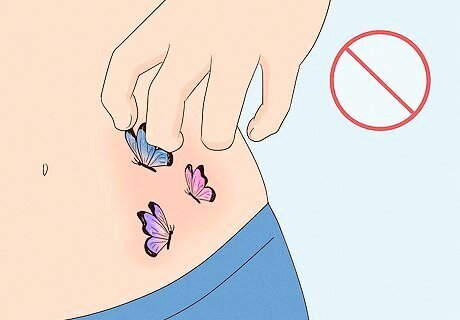
Allow your tattoo to scab and heal. While the first few weeks of flaking and scabbing can be itchy and unpleasant, don’t scratch at your tattoo. Let it heal organically.
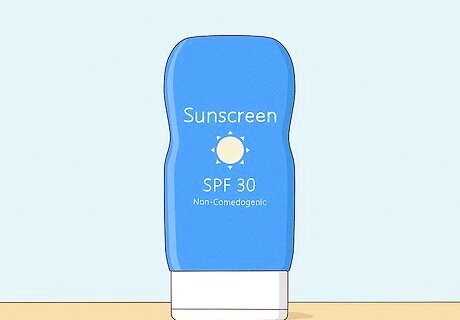
Apply sunscreen. The sun’s UV rays will damage your tattoo. Apply a non-comedogenic, high-SPF sunblock to keep your tattoo’s ink from fading.

Wear loose-fitting clothes. Avoid tight clothes and nylons while your tattoo heals. It’s best to wear baggy, loose outfits for the first 2 weeks after receiving a new tattoo.

Be patient. We know it can feel like years waiting for your tattoo to heal properly, but trust us, it’s worth the wait. After about 4 weeks, once the skin around your ink has mended, your tattoo will look better than ever and be totally safe to swim with (and you won’t even need to waterproof it)!




















Comments
0 comment